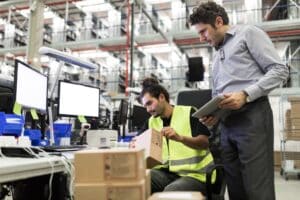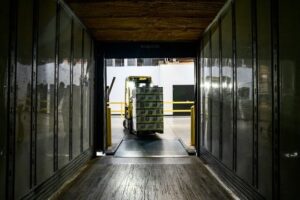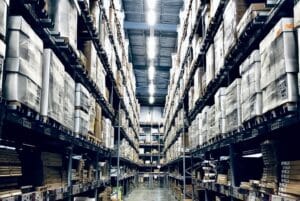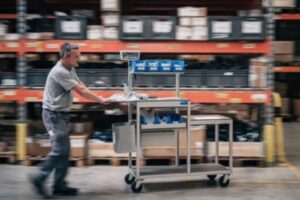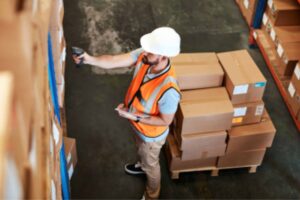Sustainable Supply Chain: How to combine performance and ecology in your warehouse?
WMS software
Logistics
Supply Chain
August 1, 2025
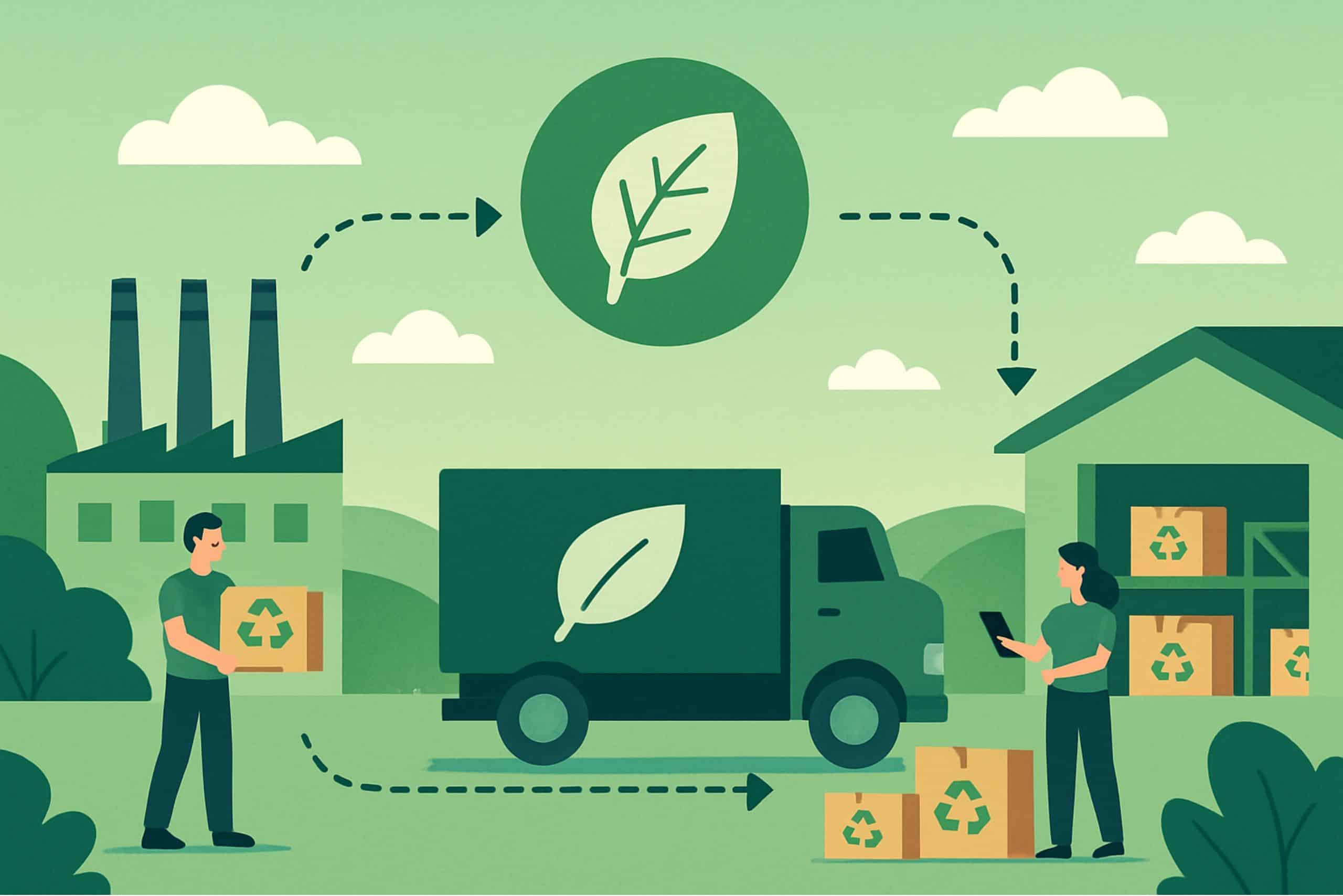
Green logistics is no longer an option. It's becoming a requirement.
The question is no longer whether your supply chain should become sustainable, but how and how quickly .
Faced with increasingly demanding consumers regarding brand ethics, tougher environmental regulations and volatile energy costs, inaction has become the greatest risk.
For decades, logistics has been seen as an unavoidable cost center and a source of pollution.
What if every aspect of your warehouse, from inventory management to order fulfillment, held a hidden opportunity to boost your profitability, enhance your brand image, and build a decisive competitive advantage?
This isn't a utopia. This is the reality of green logistics. This article isn't just a set of principles. It's a concrete and comprehensive roadmap for transforming your warehouse management into a sustainable performance engine.
We will see how strategic tools, and in particular WMS ( Warehouse Management System ) software, are no longer simple organizational tools but the real brains of the warehouse of the future.
Get ready to rethink your warehouse.
Why adopt a sustainable supply chain today?
Logistics activities ( transport + logistics infrastructure) contribute to approximately 11% of global greenhouse gas emissions.
But beyond the environmental issue, green logistics is a competitiveness strategy.
- 90% of consumers expect companies to commit to the environment, according to a study by Oney
- Public aid for decarbonization is increasing
- Energy and transportation costs continue to rise
Taking the turn towards a sustainable supply chain therefore means anticipating regulations, controlling costs and meeting market expectations.
Indeed, the concept of sustainable Supply Chain is based on three inseparable pillars :
- Economic performance
- Social equity
- Environmental protection
The goal is therefore not only to “green” its operations, but to create an ethical and profitable system in the long term.
Ignoring this transformation means running the risk of being left behind by more agile competitors and losing the trust of your customers.
The concrete benefits of green logistics
Adopting eco-responsible practices is a strategic decision with measurable benefits.
Significant reduction in operational costs
Green logistics is synonymous with optimization. By seeking to reduce your resource consumption, you automatically reduce your expenses. For example, this can involve reducing energy bills thanks to a better-insulated and lit warehouse, lowering transportation costs through route optimization, and reducing waste treatment costs.
Improving brand image and customer loyalty
Today, approximately 7 out of 10 consumers (NielsenIQ study) say they are willing to pay more for products from transparent and committed brands. With this in mind, a sustainable supply chain becomes a real selling point. It demonstrates your values and creates a strong emotional connection with your customers, who no longer choose just a product, but a company that shares their beliefs.
Regulatory compliance and anticipation of standards
Environmental regulations are multiplying and becoming more stringent in France and Europe (AGEC law, European taxonomy, etc.). Adopting a proactive approach not only allows you to be compliant, but also to anticipate future legislation, thus avoiding potentially costly fines and urgent adaptations.
A lever for attracting and retaining talent
The quest for meaning at work is a strong expectation of new generations. A company that is visibly committed to the environment is more attractive. Implementing a strong CSR (Corporate Social Responsibility) policy, embodied by sustainable logistics, is becoming a real advantage for attracting and retaining the best talent.
Company valuation and access to new financing
ESG (Environmental, Social, and Governance) criteria are now central to investor decisions. A company that can demonstrate the sustainability of its operations is perceived as less risky and better managed. It will find it easier to secure financing and will see its valuation increase.
The heart of the transformation: The eco-responsible warehouse
The warehouse is the beating heart of your supply chain. It's where the most significant efficiency gains and impact reductions can be achieved. Transforming your warehouse isn't just about installing solar panels; it's about intelligently redesigning every process.
Pillar 1: Optimizing transport, the crux of the carbon war
Freight transportation accounts for an overwhelming share of greenhouse gas emissions in a supply chain.
The critical issue of the "last mile ," this final stage of delivery, is often the most expensive and polluting. Optimizing it is now a priority. Several solutions exist, such as: grouping deliveries, and/or studying alternative modes of transport in urban areas (electric vehicles, cargo bikes). All this, centered on flawless planning.
Actionable Checklist: Reduce the Carbon Footprint of Your Transportation
- Analyze your current transportation patterns closely to see where the inefficiencies are
- Group orders by destination to maximize vehicle fill.
- Optimize routes using a TMS ( Transport Management System ), for example, to calculate the shortest and most logical routes.
- Assess the relevance of alternative transport, such as rail or river for long distances, and electric vehicles for the last mile.
- Train drivers in eco-driving. Smooth driving can reduce fuel consumption by 10 to 15%.
- Work with carriers who share your sustainability goals and invest in less polluting fleets.
Pillar 2: Sustainable building to build the warehouse of the future
The infrastructure itself must be taken into consideration in a green logistics approach. An energy-intensive warehouse is a financial and ecological drain. Therefore, the warehouse of the future is a smart, energy-efficient building designed to minimize its footprint.
Energy performance: the number one priority
In a business, and even more so in a warehouse, lighting and heating are the primary energy consumers. Switching to 100% LED lighting, coupled with presence detectors, can generate savings of up to 80%. Insulating the roof and walls, as well as installing sectional doors, helps maintain a stable temperature at a lower cost. Installing photovoltaic panels on the roof can even allow the warehouse to produce some, or even all, of the energy it consumes.
Waste management: the principles of the 5Rs and the circular economy
Eco-responsible management requires, above all, the reduction and recovery of waste. Therefore, the 5R principle must become a mantra:
- Refuse: Refuse unnecessary packaging from suppliers.
- Reduce: Reduce the amount of waste produced at source by reducing over-packaging as much as possible.
- Reuse: Give containers, pallets, and packaging a second life. You can also opt for reusable block pallets and offer return packaging to your customers.
- Recycle: Since 2016, sorting the 5 streams (paper/cardboard, metal, plastic, glass and wood) has been mandatory for businesses.
- Return to the earth: Compost organic waste.
Actionable Checklist: For an Eco-Responsible Warehouse
- Conduct an energy audit to identify the main sources of energy waste.
- Switch to LED lighting.
- Install motion and light sensors to only illuminate the areas in use, when necessary.
- Reinforce insulation: Roof, cladding, openings... every point of heat loss must be treated.
- Study the potential of solar energy and carry out a study for the installation of photovoltaic panels.
- Set up a multi-stream sorting system by installing dedicated bins for each type of waste (cardboard, plastic film, wood, etc.).
- Contract with local recycling channels and ensure that your waste is actually recycled.
Pillar 3: Eco-responsible storage management, intelligence at the heart of the racks
Poor inventory management is a source of monumental waste: wasted space, time, energy, and ultimately, product. An eco-responsible approach aims to optimize every square meter and every movement.
Fight against overstocking and obsolescence
Storing products that don't sell is ecologically and economically unwise. They take up space, consume energy to be stored in good conditions, and risk becoming obsolete, thus turning into waste. Inventory management software, often integrated with WMS software, is a true ally in achieving a sustainable supply chain. It allows you to analyze sales history, anticipate demand, and adjust stock levels as closely as possible to avoid surpluses and stockouts.
The ABC method: a classic for sustainable organization
The ABC method is an inventory classification technique that contributes to greener logistics. It consists of classifying items into 3 categories:
- Class A: The 20% of references which represent 70-80% of the stock value or exit frequency.
- Class B: The next 30% of references for 15-25% of the value.
- Class C: The remaining 50% of references for 5% of the value.
By implementing this method, you organize your warehouse more intelligently. Class A are stored in the most accessible areas, near shipping docks , to reduce picking distances and preparation time. It's also a great way to reduce not only wear and tear on equipment, but also your energy consumption.
Quick tip : A good inventory management system can automate this classification and suggest optimal locations.
Eco-design of packaging: less is more
Packaging is the customer's first physical contact with your sustainable commitment. In your approach, you must therefore:
- Reduce void space: Use packaging that's the right size for the product. Custom packaging systems or algorithms that suggest the right carton can reduce void space in packages by up to 40%, reducing the need for cushioning materials and optimizing transportation.
- Choose responsible materials: Favor recycled and certified cardboard (FSC), kraft paper, bio-sourced cushioning solutions (based on corn starch, for example) and ban single-use plastic as much as possible.
- Think about the second life: Design packaging that is easily reusable or recyclable by the end customer.
The circular economy and returns management (reverse logistics)
Sustainable management doesn't stop at shipping. What do you do with returned products? Reverse logistics is a pillar of the circular economy. A well-oiled process, further managed by a WMS solution, allows for efficient sorting of returns: restocking intact products, repair, reconditioning, donation to charities, or, as a last resort, recycling through appropriate channels. This marks the end of "all trash" and the birth of new value chains.
Actionable Checklist: For Daily Storage Management
- Implement the ABC method: Use WMS software to classify your items and reorganize your picking zoning.
- Analyze stock rotation by identifying dormant products (“dead stock”) and implement destocking actions (promotions, batches).
- Optimize packaging size to reduce void space.
- Audit your packaging suppliers: demand recycled, recyclable and, if possible, bio-sourced materials.
- Structure your “reverse logistics” process by defining clear rules for the processing of each returned product.
- Use logistics tracking software: track the product from entry to exit, and even to its return, for total transparency.
WMS: the brain of your sustainable logistics
We've mentioned it many times, but it's time to say it clearly: WMS (Warehouse Management System) software is one of the cornerstones of any eco-responsible . It's not just a tracking tool; it's a 360° view of operations that helps you make informed eco-responsible decisions.
How does WMS software actually reduce your environmental impact?
Warehouse management software acts like a conductor, ensuring that every action is carried out as efficiently as possible.
1. Optimization of internal movements in stock management
The WMS calculates the shortest picking paths in real time (serpentine paths, for example), by grouping items from the same order. Less distance traveled by operators and forklifts means less energy consumed (electricity or fuel), less wear and tear on equipment, and greater productivity. Productivity gains are estimated at around 20 to 30% for this item alone.
2. Accuracy in inventory management
By providing a real-time view of each item and its location, the WMS eliminates inventory errors. For example, it ensures strict management of expiration dates (FEFO – First Expired, First Out) for the relevant sectors, drastically reducing product waste. By making data more reliable, it enables the implementation of the "just-in-time" strategy and lowers overall inventory levels, thus freeing up space and capital.
3. Total traceability for a transparent supply chain
Logistics tracking software, often a key feature of a WMS, allows you to track a product at every stage. This traceability ensures consumer confidence and ensures highly efficient returns and recall management. In the event of a problem, you can isolate the affected batch in just a few clicks, avoiding the massive waste associated with recalling an entire production line.
4. The catalyst for warehouse automation
Warehouse automation ( conveyors, sorters, robots, AGVs) is one of the main levers for performance and energy efficiency. They allow for denser operations, often in conditions of reduced light and temperature, generating significant energy savings. But these systems are nothing without a brain to control them: the WMS. The latter orchestrates the robots' missions, synchronizes flows between automated and manual areas, and ensures that the entire system operates smoothly and energy-efficiently.
5. Intelligent management of packaging and shipping
WMSs can integrate "pre-packing" modules . Depending on the volume and weight of the items in an order, the system recommends the most suitable box from the available sizes. This systematizes the reduction of empty space, with all the cascading benefits on the purchase of cushioning and transport costs.
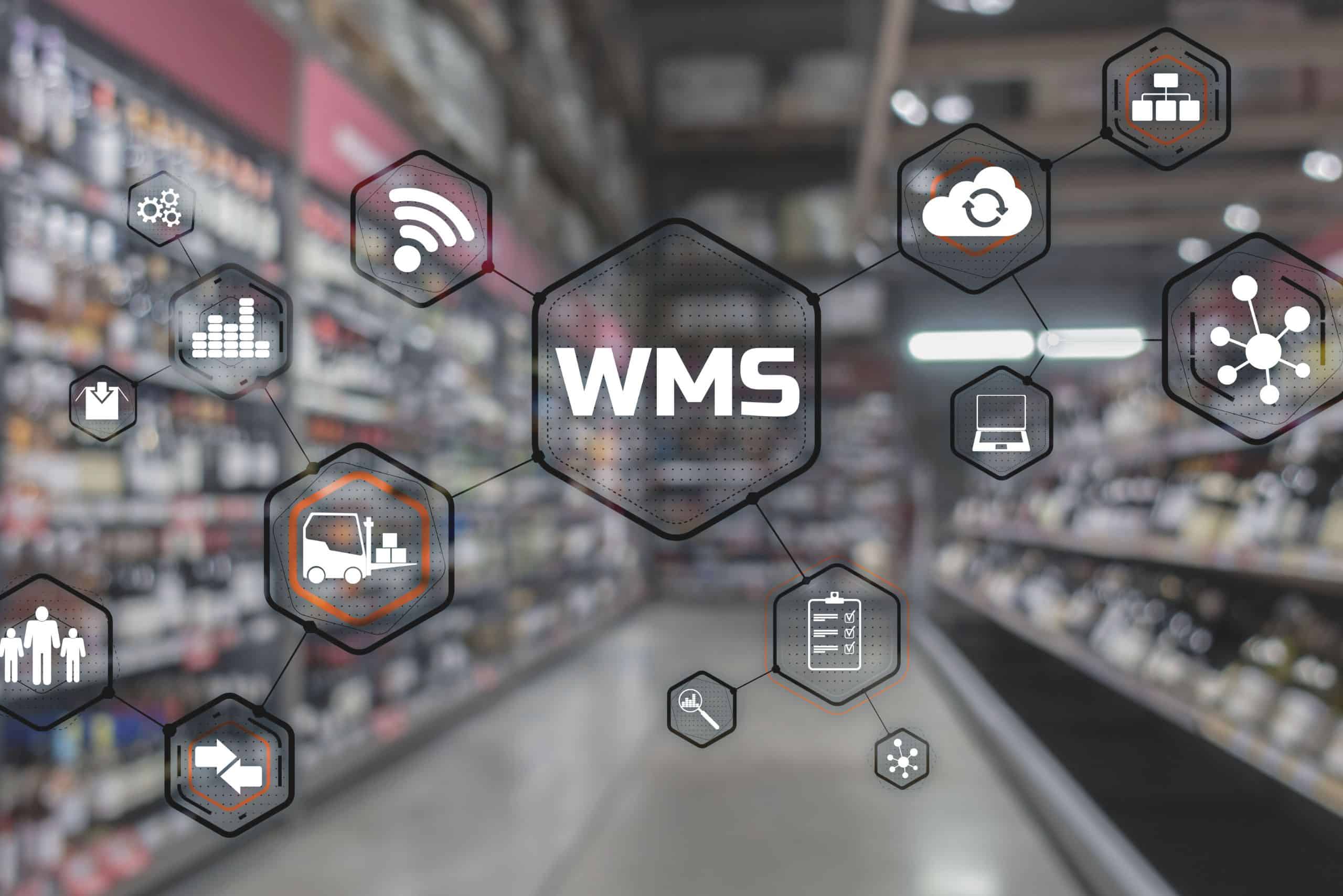
Tomorrow's performance will be sustainable
We are at a tipping point. Sustainable supply chains and eco-responsible warehouse management are no longer marginal initiatives or mere marketing tools. They have become central to performance and competitiveness.
It is not a question of choosing between profitability and ecology , but of understanding that they are two sides of the same coin. Optimizing transport, energy-efficient buildings, intelligent storage management and combating waste in all its forms are direct sources of savings and value creation.
In this quest for efficiency, technology is your greatest ally. WMS (Warehouse Management System) software isn't an expense; it's the strategic investment that will give you the visibility and control you need to drive this transformation. It's the tool that translates your ecological ambitions into concrete operational results.
The warehouse of the future is already here. It's smart, agile, connected, and, above all, sustainable. Building it isn't just a responsibility; it's the biggest growth opportunity for your business in the coming decade.
Ready to transform your warehouse into a sustainable profit center? Discover how our EGO WMS can help you balance performance and a sustainable supply chain.
Contact us for a needs analysis. After an initial discussion, we'll get back to you with a demo of our WMS tailored to your environment and context.
FAQ: Everything you need to know about sustainable supply chains
What is a sustainable supply chain?
A sustainable supply chain is one that integrates environmental, social, and economic criteria into all its decisions. Its goal is to minimize its negative impact on the environment (CO2 emissions, waste, resource depletion) while remaining economically viable and socially responsible.
What is the difference between “green logistics” and “sustainable supply chain”?
Green logistics focuses primarily on the environmental aspect of logistics activities (transport, storage, packaging). Sustainable supply chain is a broader concept that encompasses green logistics but adds social/ethical (working conditions, fair trade) and economic (long-term profitability, resilience) dimensions across the entire value chain, from raw material sourcing to the end customer and recycling.
How does WMS software contribute to an eco-responsible warehouse?
WMS software reduces carbon footprint in several ways:
- Travel optimization: By calculating the shortest routes for picking, it reduces the energy consumption of the trolleys.
- Reduced errors: Fewer preparation errors mean fewer returns, and therefore less unnecessary transport.
- Inventory management: It optimizes the use of storage space, reducing the need for surface area. It also improves inventory management, avoiding overstocking and the waste of resources and energy related to the production and storage of unsold products.
What are the first concrete steps to make my warehouse more eco-responsible?
Start with quick wins:
- Energy audit: Take stock of your consumption to identify waste.
- Waste management: Implement rigorous and visible selective sorting for the 5 streams (paper/cardboard, metal, plastic, glass and wood).
- Packaging optimization: Analyze the size of your boxes in relation to the products and seek to reduce empty space.
- Team awareness: Involve your employees in the process. They are the best agents of change on a daily basis.
Does a sustainable supply chain cost more to implement?
There may be an initial investment (for example, purchasing WMS software, insulating a building, or switching to electric vehicles). However, almost all sustainability initiatives generate a positive return on investment (ROI) in the medium term. Savings on energy, transportation, raw materials, and waste treatment often offset and exceed the initial investment. In addition, there are also intangible benefits (brand image, customer loyalty, attractiveness for talent) that should not be overlooked.
Most read articles
WMS software
Logistics
Supply Chain
November 7, 2025
Go beyond the ABC method: How a WMS refines your inventory management strategy?
In logistics, the ABC method is a classic. But here's the hard truth: in the age of e-commerce, relying solely on a static ABC analysis is like trying to win a Formula 1 race without the right car. The problem isn't the method itself, but treating it as an immutable truth set in stone once a year.
WMS software
Logistics
Supply Chain
October 31, 2025
Packaging optimization: How does your WMS save you money on transported "empty space"?
Empty space represents, on average, 57% of the volume of packages shipped in e-commerce. It's not just wasted space; it's money gone up in smoke. In this article, we'll analyze how a WMS platform can become the ultimate weapon against empty space.
WMS software
Logistics
Supply Chain
July 3, 2024
Inventory management using WMS software
To master your inventory management, it is imperative to use suitable and efficient inventory management software. With this automation, you can monitor the status of your inventory in real time, allowing you to make informed and rapid decisions to avoid stock-outs or overstocks.
